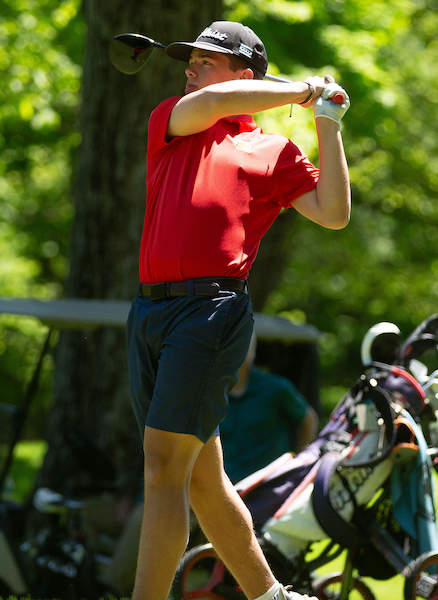
New Math: Division & Multiplication Problems
July 25, 2017
By Jack Roberts
MHSAA Executive Director
This is the second part in a series on MHSAA tournament classification, past and present, that will be published over the next two weeks. This series originally ran in this spring's edition of MHSAA benchmarks.
High school tournament classifications went viral before there was social media and most of us knew what “viral” meant.
Much as a virus infects computers today or has created epidemics of disease around the world for centuries, high school tournament classification – once introduced – tends to spread uncontrollably. Once started, it tends to keep expanding and rarely contracts.
While we are still some distance from providing every team a trophy as a result of expanding high school tournament classification across the country, there is criticism nevertheless that we are headed in that direction – a philosophy which is supposed to exist only in local youth sports for our youngest children.
Michigan could be blamed for all this. Michigan is generally accepted as the first state to provide different classifications for season-ending tournaments for different sized schools. It started a century ago. Today, every state has various classifications for its tournaments in most if not all sports. And it is a bit ironic that Michigan – creator of the classification chaos – more than most other states has kept the number of tournament classes or divisions under control.
Yes, there is evidence that tournament classifications have expanded over the years in Michigan, especially with the relatively recent introduction of tournaments in football and the late 1990s’ move from classes to divisions in most MHSAA tournaments. But the MHSAA Representative Council has held true to its word when it expanded the playoffs for football from four classes to eight divisions: this is needed because of unique factors of football, factors that exist in no other sport; and all other sports should be capped at a maximum of four classes or divisions.
Kentucky is the preeminent defender of single-class basketball. All of its 276 high schools compete for the single state championship for each gender. In Indiana, there are still open wounds from its move in 1998 from one to four classes for its 400 schools in basketball.
Multi-class tournaments have tended to increase the number of non-public school champions, which some states are trying to lower through enrollment “multipliers,” and also tend to increase the number of repeat champions, which some states are trying to affect with “success factors” which lift smaller schools into classifications for larger schools if they take home too many trophies.
While there is considerable evidence that state tournaments do as much bad as good for educational athletics, state associations persist in providing postseason tournaments because, on balance, the experiences are supposed to be good for student-athletes. And once we reach that conclusion it is just a small leap to believe that if the tournaments are good for a few, they must be better for more – which leads to creating more and more tournament classifications. One becomes two classes, then three, then four and so forth.
While the argument is that more classifications or divisions provides more students with opportunities to compete and win, it is undeniable that the experience changes as the number of tournament classifications expands. It is not possible for state associations to provide the same level of support when tournament classifications expand to multiple venues playing simultaneously. For example, there is less audio and video broadcast potential at each venue, and less media coverage to each venue. Focus is diluted and fans diminished at each championship.
No one can argue reasonably that today's two-day MHSAA Football Finals of eight championship games has the same pizazz as the one-day, four-games event conducted prior to 1990.
In some states the number of divisions has grown so much that it is difficult to see much difference between the many season-ending state championship games and a regular-season event in the same sport.
It is a balancing act. And Michigan has been studying that balance longer than any other state, and charting a steadier course than most.
Addition by Division
The shift to Divisions for MHSAA Tournament play in numerous sports has added up to a greater number of champions for teams and individuals across the state. Following are the sports currently employing a divisional format, and the procedures for determining enrollment and classification.
In 23 statewide or Lower Peninsula tournaments, schools which sponsor the sport are currently divided into nearly equal divisions. They are:
- Baseball - 4 Divisions
- Boys Bowling - 4 Divisions
- Girls Bowling - 4 Divisions
- Girls Competitive Cheer - 4 Divisions
- LP Boys Cross Country - 4 Divisions
- LP Girls Cross Country - 4 Divisions
- LP Boys Golf - 4 Divisions
- LP Girls Golf - 4 Divisions
- Ice Hockey - 3 Divisions
- Boys Lacrosse - 2 Divisions
- Girls Lacrosse - 2 Divisions
- Boys Skiing - 2 Divisions
- Girls Skiing - 2 Divisions
- LP Boys Soccer - 4 Divisions LP
- Girls Soccer - 4 Divisions
- Girls Softball - 4 Divisions
- LP Boys Swimming & Diving - 3 Divisions
- LP Girls Swimming & Diving - 3 Divisions
- LP Boys Tennis - 4 Divisions
- LP Girls Tennis - 4 Divisions
- LP Boys Track & Field - 4 Divisions
- LP Girls Track & Field - 4 Divisions
- Wrestling - 4 Divisions
Lists of schools for each division of these 23 tournaments are posted on MHSAA.com approximately April 1. Listings of schools in Upper Peninsula tournaments for their sports are also posted on MHSAA.com. The lists are based on school memberships and sports sponsorships in effect or anticipated for the following school year, as known to the MHSAA office as of a date in early March.
In football, the 256 schools which qualify for MHSAA 11-player playoffs are placed in eight equal divisions annually on Selection Sunday. Beginning in 2017, the 8-player divisions will be determined in a like manner on Selection Sunday as well, with 32 qualifying schools placed in two divisions.
Schools have the option to play in any higher division in one or more sports for a minimum of two years.
The deadlines for "opt-ups" are as follows:
- Applications for fall sports must be submitted by April 15
- Applications for winter sports must be submitted by Aug. 15
- Applications for spring sports must be submitted by Oct. 15
Subsequent to the date of these postings for these tournaments, no school will have its division raised or lowered by schools opening or closing, schools adding or dropping sports, schools exercising the option to play in a higher division, or approval or dissolution of cooperative programs.
When the same sport is conducted for boys and girls in the same season (e.g., track & field and cross country), the gender that has the most sponsoring schools controls the division breaks for both genders.

Iron Mountain's Pigeon Holds On to Finish 1st, Hancock Claims Team Title
By
Jason Juno
Special for MHSAA.com
May 29, 2024
CRYSTAL FALLS – Iron Mountain junior Cooper Pigeon started Wednesday’s Upper Peninsula Division 2 Final with a birdie.
He made sure the rough patch that followed was short lived – and it’s a good thing he did, because Hancock’s Jackson Sintkowski made sure there wasn’t much margin for error.
Pigeon carded a 76, a single stroke ahead of Sintkowski, to win the medalist honor at Young’s Golf Course.
“He has the mindset that he doesn’t let that bother him,” Iron Mountain coach Steve Flaminio said. “He turned it around and got a couple birdies and righted the ship. He figured it out like he always does and started playing pretty strong.”
It wasn’t an easy course, nor was it a perfect day to golf. The sun was out, but it was windy, which could exaggerate any minor errors, Pigeon said.
Some of the pin placements were tough, Flaminio said, and the greens were super fast – Flaminio watched kids three and four putt many times throughout the day.
“There were some young guys out there struggling. Cooper figured it out, and that was key,” he said.
The Finals title was Pigeon’s first. He knew he had a chance to win after shooting a 73 in his last round at this course.
 “But you have to play well, and you can’t get ahead of yourself,” he said.
“But you have to play well, and you can’t get ahead of yourself,” he said.
The bulk of the U.P. summer awaits him and he plays golf almost daily, so he could certainly be a force to be reckoned with next season as well.
“It’s sweet; hopefully we can get another one next year,” Pigeon said.
Flaminio said the rest of the team was excited for their individual champ because they can see how hard he works at his craft.
“So to see him come home as medalist in the U.P. is pretty awesome,” he said.
Sintkowski, the runner-up from Hancock, did leave with some hardware himself as he led the Bulldogs to their first U.P. Finals team title since they won Division 2 back-to-back in 2013 and 2014.
He was one of four Bulldogs to finish among the top 10 individuals – Bryce Hanner placed fifth with an 83, Kirby Storm was sixth with an 86 and Drew Sturos tied for 10th with an 88.
Hancock competes in the Western Peninsula Athletic Conference, where it finished runner-up to Division I Houghton throughout much of the season. That doesn’t mean the Bulldogs have been golfing poorly.
“The kids have been playing well all year,” Hancock coach Paul Sintkowski said.
The Bulldogs came into this tournament with the lowest team average, so they considered themselves the favorites and lived up to that high expectation.
“We had the guys to get it done today, but you still got to get it done,” said Sintkowski, who earned his first U.P. team title in nine years of coaching. “They got it done today. I’m real proud of these guys.”
Hancock was led by the West-PAC Player of the Year, Jackson Sintkowski, a junior. And their team got a big boost this season when Hanner decided to join the golf team.
“Bryce Hanner was a nice addition to our team this year,” Coach Sintkowski said of the senior. “He decided to play golf this year, and that really bolstered our lineup down the stretch. It gave an extra solid player where we could always count on a good score for him.”
Painesdale Jeffers finished as the team runner-up, 15 strokes behind Hancock, 333-348. St. Ignace was third, Iron Mountain fourth and Munising fifth.
Owen Kuehnau of Stephenson carded an 81 to take third place individually, and St. Ignace’s Sawyer Graham was fourth with an 82.
PHOTOS (Top) Iron Mountain's Cooper Pigeon drives on No. 14 at Young’s Golf Course on Wednesday. (Middle) Hancock’s Jackson Sintkowski follows his drive on the same hole. (Photos by Jason Juno.)

